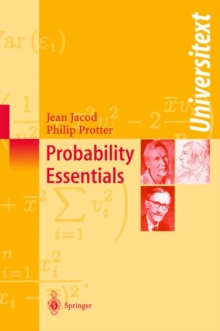
Description
One of the difficulties in an introductory book is to communicate a sense of purpose.
Only too easily to the beginner does the book become a sequence of definitions, concepts, and results which seem little more than curiousities leading nowhere in particular.
In this book I have tried to overcome this problem by making my central aim the determination of all possible groups of orders 1 to 15, together with some study of their structure.
By the time this aim is realised towards the end of the book, the reader should have acquired the basic ideas and methods of group theory.
To make the book more useful to users of mathematics, in particular students of physics and chemistry, I have included some applications of permutation groups and a discussion of finite point groups.
The latter are the simplest examples of groups of partic- ular interest to scientists.
They occur as symmetry groups of physical configurations such as molecules.
Many ideas are discussed mainly in the exercises and the solutions at the end of the book.
However, such ideas are used rarely in the body of the book.
When they are, suitable references are given. Other exercises test and reinfol:'ce the text in the usual way.
A final chapter gives some idea of the directions in which the interested reader may go after working through this book.
References to help in this are listed after the outline solutions.
Information
-
Download - Immediately Available
- Format:PDF
- Publisher:Springer New York
- Publication Date:06/12/2012
- Category:
- ISBN:9781461381174
Information
-
Download - Immediately Available
- Format:PDF
- Publisher:Springer New York
- Publication Date:06/12/2012
- Category:
- ISBN:9781461381174










